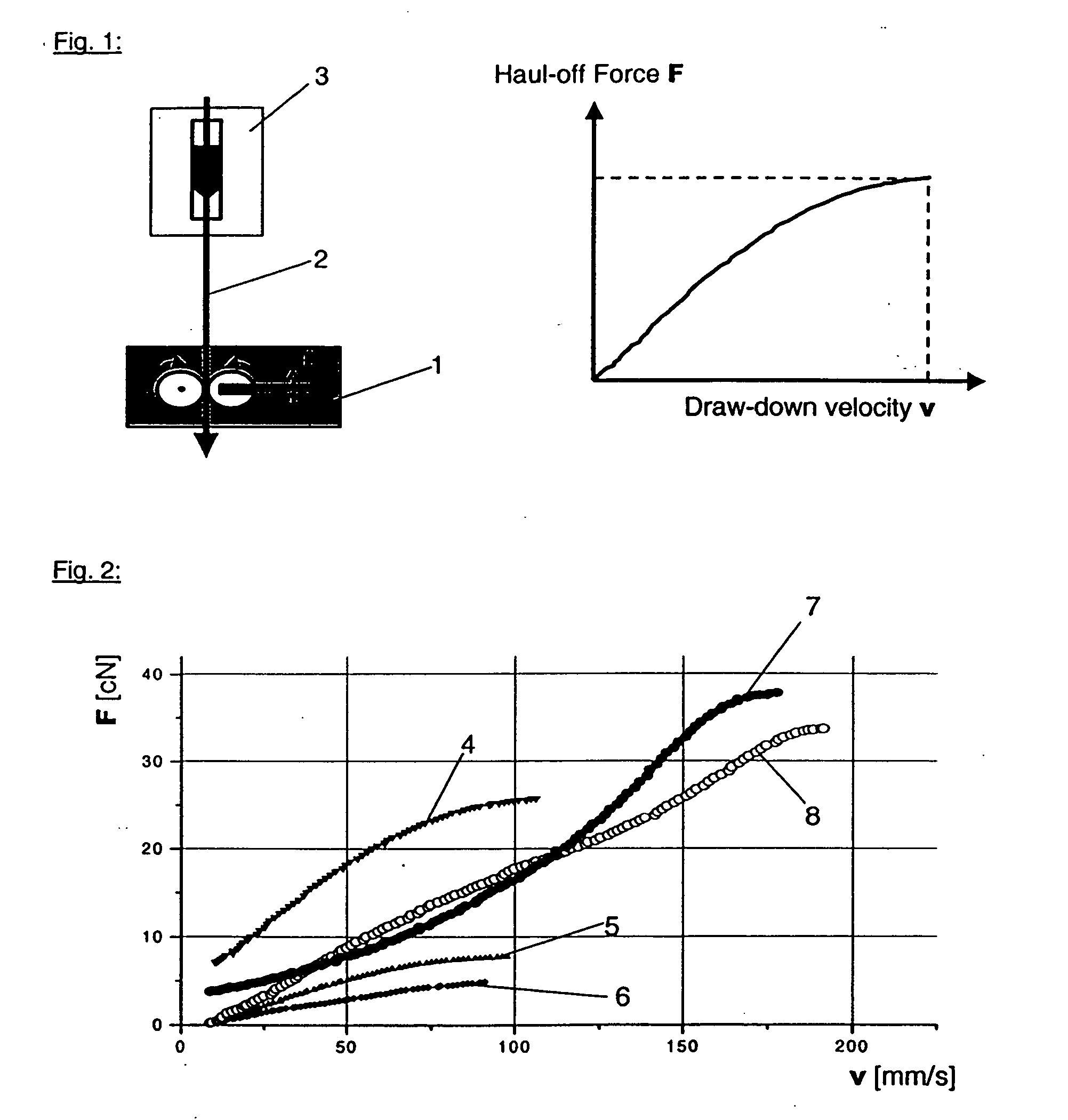Insulating foam composition
a technology of insulating foam and composition, which is applied in the direction of plastic/resin/waxes insulators, organic insulators, conductors, etc., can solve the problems of inherently poor melt strength of linear polymers such as polypropylene, inability to process hard polypropylene, and product softness, etc., to achieve the balance of processability, electrical properties and mechanical properties
- Summary
- Abstract
- Description
- Claims
- Application Information
AI Technical Summary
Benefits of technology
Problems solved by technology
Method used
Image
Examples
Embodiment Construction
[0065] Synthesis of the Modified Propylene Polymer B
[0066] A powdery polypropylene homopolymer, with a melt index of 0.25 g / 10 min at 230.degree. C. / 2.16 kg and an average particle size of 0.45 mm, is metered continuously into a continuous mixer. Furthermore, 0.45 wt % based on the propylene homopolymer of tert butyl peroxybenzoate as thermally decomposing free radical forming agent is metered into the mixer. While being mixed homogeneously at 50.degree. C., the propylene homopolymer containing the tert butyl peroxybenzoate is charged absorptively during a residence time of 7 minutes at 50.degree. C. by means of a mixture of butadiene and nitrogen with 0.135 wt % of butadiene, based on the polypropylene homopolymer. After transfer to a twin screw extruder, the powdery reaction mixture, in contact with the mixture of butadiene and nitrogen, with which it has been charged, is melted at a mass temperature of 230.degree. C. and, after a coarse degassing, subjected to a fine degassing wi...
PUM
| Property | Measurement | Unit |
|---|---|---|
| melt index | aaaaa | aaaaa |
| melt index | aaaaa | aaaaa |
| melt index | aaaaa | aaaaa |
Abstract
Description
Claims
Application Information
 Login to View More
Login to View More - R&D
- Intellectual Property
- Life Sciences
- Materials
- Tech Scout
- Unparalleled Data Quality
- Higher Quality Content
- 60% Fewer Hallucinations
Browse by: Latest US Patents, China's latest patents, Technical Efficacy Thesaurus, Application Domain, Technology Topic, Popular Technical Reports.
© 2025 PatSnap. All rights reserved.Legal|Privacy policy|Modern Slavery Act Transparency Statement|Sitemap|About US| Contact US: help@patsnap.com


